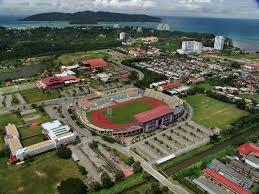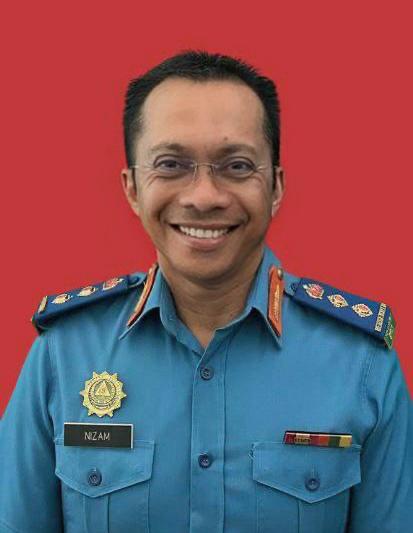By Associate Professor Dr Mohamad Nizam Nazarudin, Center For Education Studies and Community Well-Being
Universiti Kebangsaan Malaysia
KOTA KINABALU: Recently, Ahmad Marzuki Nasir, CEO of Sabah Football Club (Sabah FC), released a statement outlining plans to construct a new stadium on 9 acres of property in Kota Kinabalu at a cost of at least RM50 million. The ideas and debates of ordinary internet users about how to improve stadiums are equally impressive. The media had previously covered stories about the development of stadiums for teams like Selangor and Kedah. I’d like to stress the significance of conducting a feasibility study first. To ensure the project can deliver substantial and long-lasting advantages to the end user, a feasibility study should be conducted. Considerations like these—along with the project’s potential environmental and social advantages and financial viability—should all be factored into the feasibility assessment.

The cost of construction will be estimated through meticulous pre-construction planning, design, and building. The site is selected, plans are drawn out, structural plans are drawn up, buildings are built, and finally, the project is managed. Excavation, concrete work, steel fabrication, installation of electrical and mechanical systems, and finishing work are just some of the many trades involved in the construction process. Architects, engineers, contractors, and municipal officials all need to work together on this project. The time required to finish construction ranges from months to years, depending on factors such as project size and complexity. Sabah Football Club has a plan for it, and the designated engineer has already drawn out a sketch. The stadium, which is only used for football, reportedly has between 15,000 and 20,000 seats available.
The second part of the study will analyse how much it will cost to keep the stadium running on a regular basis. Once the football stadium has been built, it must be regularly maintained and operated to ensure the safety of the players and the comfort of the spectators. Inspecting the building and its systems for signs of wear and tear, as well as cleaning and fixing any damage, are all part of the maintenance process. During events, the stadium will need to be managed in terms of things like security, ticketing, food, and parking. Updating and renovating the stadium on a regular basis is also necessary to keep it in compliance with modern safety and technological standards. Facility managers, maintenance workers, security guards, and event planners are all essential to the smooth running of a football stadium. Together, they make sure the stadium operates efficiently and everyone has a good time. There have been speculations that Sabah Fc has had to pay a significant amount of money in recent years for rent as well as upgrades to the stadium and practise fields

Thirdly, the study considers the potential noise pollution, traffic congestion, and waste management issues that may arise as a result of the construction of the stadium. Destroying natural areas, causing soil erosion, and polluting the air and water supply are only some of the negative environmental effects that might result from building a football stadium. Soil erosion and sedimentation in neighbouring waterways are two negative outcomes that can result from land development activities like excavating and regrading. Construction sites often create significant amounts of air and noise pollution due to the utilisation of large pieces of machinery and materials. Efforts to lessen the stadium’s impact on the environment can continue even after it opens. Implementing recycling and waste-reduction initiatives, switching to renewable energy, and encouraging eco-friendly modes of transportation are all ways to become green during an event. By adopting a holistic sustainability strategy, football stadiums may reduce their negative effects on the environment while still providing a secure and entertaining environment for fans.
Fourthly, a social and economic study will assess the positive effects of the stadium’s construction on the local community, such as its impact on tourism, employment, and morale. Social benefits included Community Building (can bring people together, fostering a sense of community and belonging), Entertainment (a venue for entertainment and leisure activities for families and individuals, and Increased tourism (attract visitors to the area, which can boost local businesses and the economy), Employment opportunities (create jobs in the construction, hospitality, and event management industries), Sports development ( platform for the development of local sports talent and encourage youth participation in sports) and Consultation with the Local Community (local residents, businesses, and community groups to gauge their support for the project and obtain their input). While Economic benefits included Increased revenue (ticket sales, merchandise, and concessions), a boost to the local economy (hotels, restaurants, and retail outlets), Jobs (construction, hospitality, and event management industries), Investment opportunities (economic growth), and Increased property values (increase property values in the surrounding area, leading to increased economic activity).
Around 2021, the Football Association (SAFA) itself once expressed the desire to plan to build its own building and stadium. However, Sabah FC took drastic action to once again realize the dream of having our own football stadium that has control in terms of broadcast rights, commercials such as shop rentals, and merchandise. Even the new stadium will be equipped with offices, gymnasiums, and good dressing rooms. The 9-acre land application is said to have been made to SAFA since last year and everything depends on approval from the state government because the land belongs to the local community. It is hoped that the Sabah Football Association (SAFA) can be awarded to Sabah FC.
This is not only Sabah FC’s dream but it is also the hope of all Sabah FC fans and the people of Sabah in general. Sabah FC’s efforts under the leadership of this young CEO must be responded to by SAFA, the state government, and the private sector and given priority for the benefit of all. No dream remains a dream if it is coupled with efforts to make it come true. Sabah Maju Jaya!!!


